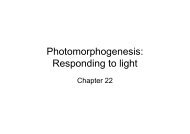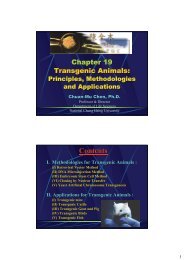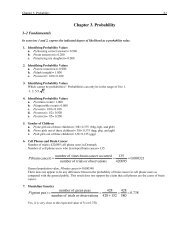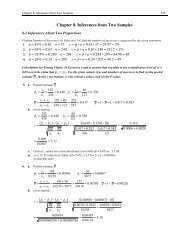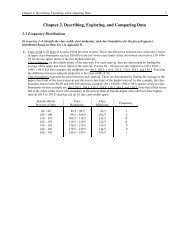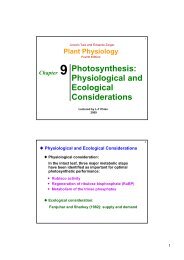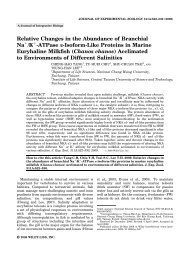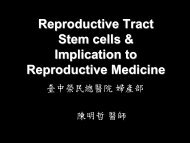Chapter 7. Hypothesis Testing with One Sample
Chapter 7. Hypothesis Testing with One Sample
Chapter 7. Hypothesis Testing with One Sample
Create successful ePaper yourself
Turn your PDF publications into a flip-book with our unique Google optimized e-Paper software.
230 <strong>Chapter</strong> 7: <strong>Hypothesis</strong> <strong>Testing</strong> <strong>with</strong> <strong>One</strong> <strong>Sample</strong>8. Effectiveness of New Chicken FeedIt is reasonable to assume that the data comes form a normally distributed population. The claim is that themean weight of newborn chickens using the new feed is greater than 62.2 oz, so this is a right-tailed test. Thesample size is n = 9 making the degrees of freedom df = 8. The significance level is 0.01. Calculating x fromthe sample data givesx = Σx /n = 579.4 /9 = 64.378Calculating the sample standard deviation from the data givess = nΣ(x 2 ) − (Σx) 29 ⋅ 37,334.6 − (579.4)2= = 2.065n(n −1)9 ⋅8We move on to the test.H 0 : µ = 62.2H 1 : µ > 62.2The test statistic is t = x − µ 64.378 − 62.2= = 3.164s / n 2.065/ 9In a right-tailed test at the 0.01 significance level <strong>with</strong> df = 8, the critical value is t α= t .01= 2.896.In the row for 8 degrees of freedom, the test statistic lies between 3.250 and 2.821, so the P-value is between0.005 and 0.01.We reject the null hypothesis.The sample data support the clam that the mean weight of newborn chickens using the new feed is greater than62.2 oz.9. Effectiveness of Seat BeltsThe sample size is larger than 30, so using the Student t distribution is appropriate. The claim is that the meanamount of time spent in an intensive care unit for children, who were wearing safety belts, following anautomobile accident is less than 1.39 days, so this is a left-tailed test. The sample size is n = 123 making thedegrees of freedom df = 122, the sample mean is x = 0.83, and the sample standard deviation is s = 0.16. Thesignificance level is 0.01.H 0 : µ = 1.39H 1 : µ < 1.39The test statistic is t = x − µs / n = 0.83−1.390.16 / 123 =−38.817The critical values for 122 degrees of freedom is not on the table, so we use df = 100. In a left-tailed test at the0.01 significance level <strong>with</strong> df = 100, the critical value is −t α=−t .01=−2.364.In the row for 100 degrees of freedom, the absolute value of the test statistic falls far to the left of 2.626 so theP-value is less than 0.005.We reject the null hypothesis.The sample data support the claim that the mean amount of time spent in an intensive care unit for children,who were wearing safety belts, following an automobile accident is less than 1.39 days, which is the meannumber of days spent following an accident when children are not using a safety belt. There is strong evidenceshowing that seatbelts seem to help.




